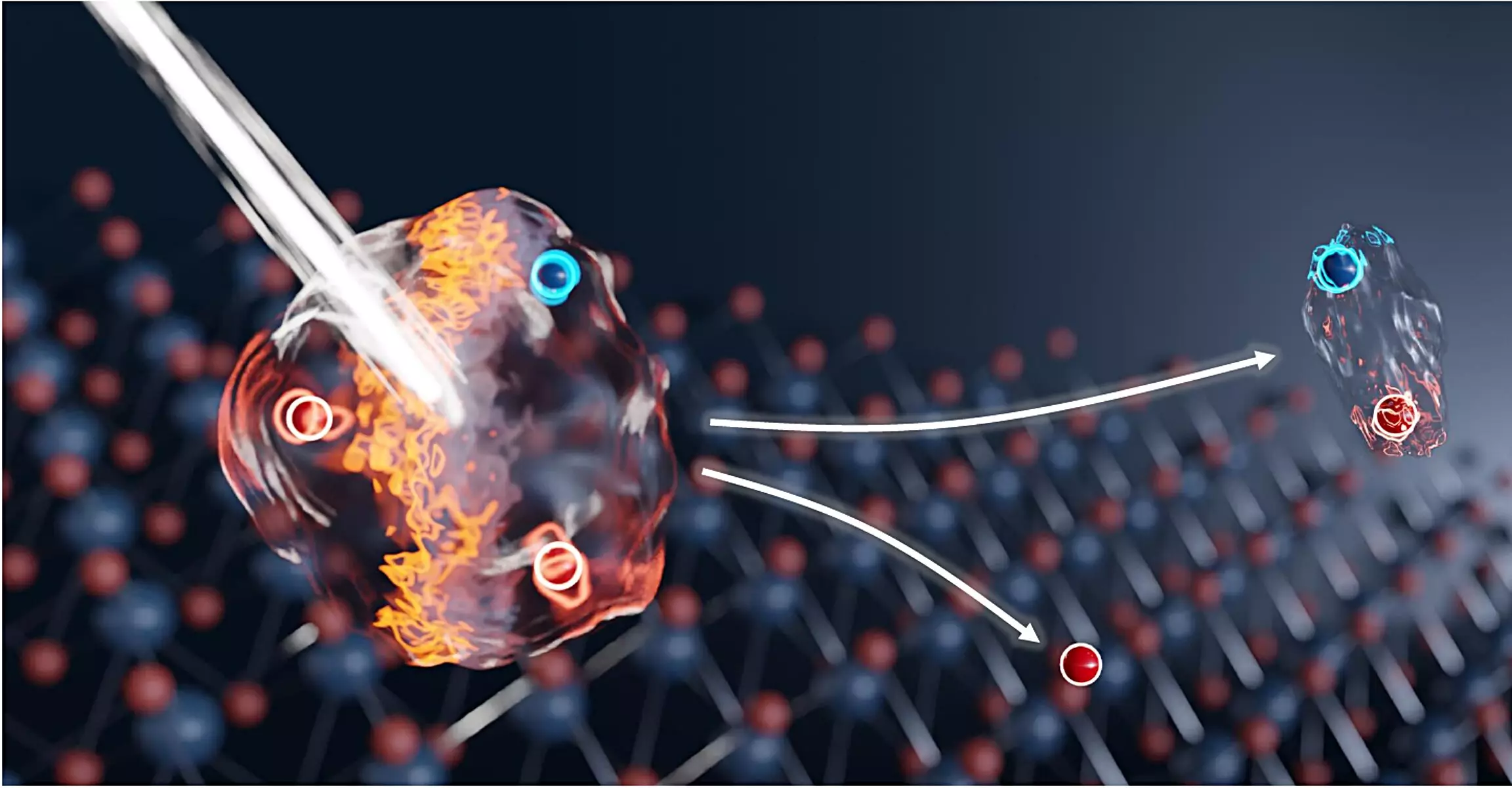The world of materials science has been revolutionized by the advent of extremely thin materials that consist of merely a few atomic layers. These two-dimensional (2D) materials present a new frontier for applications in electronics and quantum technologies, which have the potential to reshape these fields fundamentally. Recent groundbreaking research spearheaded by an international team from TU Dresden, in cooperation with Helmholtz-Zentrum Dresden-Rossendorf (HZDR), has unlocked significant advancements in the manipulation of excitons and trions—elements crucial for the development of future electronic systems. The study’s findings were published in the prestigious journal, Nature Photonics, marking a vital contribution to this burgeoning area of research.
To appreciate the implications of this research, it’s essential to grasp the fundamental differences between conventional bulk crystals and their two-dimensional counterparts. In conventional materials, excitons—composite particles formed from an electron and a “hole”—tend to have limited mobility. However, in 2D semiconductors, such as molybdenum diselenide, excitons can be generated more efficiently and have enhanced properties. These excitons can further interact with other electrons to form trions; a three-particle state that possesses both electrical charge and luminous characteristics. The ability to switch between these states—exciton and trion—opens up numerous applications in data processing, optical detection, and electronic systems.
The innovative experiment conducted at HZDR utilized a specialized facility known as the FELBE free-electron laser, which can generate intense terahertz pulses. These pulses occupy a unique frequency domain—a bridge between radio waves and near-infrared radiation. By systematically shining short laser pulses on atomically-thin layers of molybdenum diselenide at cryogenic temperatures, the researchers successfully created excitons. Upon formation, these excitons swiftly captured free electrons from the material, transforming into trions.
The crux of the research lies in the remarkable efficiency with which the trions can revert to excitons when subjected to carefully calibrated terahertz pulses. The transition occurs at an unprecedented pace, within mere picoseconds—one trillionth of a second—essentially a feat nearly a thousand times swifter than prior electronic methods. According to Dr. Stephan Winnerl, one of the leading physicists in the study, “We could distinctly demonstrate this rapid switching owing to the different wavelengths of near-infrared radiation emitted by excitons versus trions.”
Implications for Future Technologies
The ramifications of these findings are vast and multifaceted. The rapid switching between excitons and trions provides invaluable insights, potentially catalyzing advancements in several sectors, including sensor technology and optical data processing. Professor Alexey Chernikov from TU Dresden articulates, “The new method offers fascinating prospects for research, particularly surrounding complex electronic states and scalable applications.”
One promising avenue is in developing new modulator types, which could execute rapid switching, thereby enhancing the speed and efficiency of data transmission in communication technologies. Coupling ultra-thin materials with these advanced modulation techniques could lead to the creation of compact components that efficiently manage optically encoded information.
The study’s outcomes also suggest that high-resolution imaging and detection of terahertz radiation, which is critical for various technological applications, could be achievable. There is potential to manufacture adjustable terahertz detectors capable of functioning in a wide frequency spectrum, even advancing towards the creation of terahertz cameras loaded with numerous pixels. The research proposes that even minimal intensity may effectively initiate this rapid switching process, transforming the practical applications of such technologies.
The research conducted by the team at TU Dresden and HZDR reflects a substantial leap in our understanding and control of excitonic and trionic behavior within 2D materials. The unique ability to rapidly switch between these states at unprecedented speeds opens up numerous future possibilities in the realms of sensor technology, data processing, and advanced imaging systems. As researchers continue to explore and refine these techniques, we stand on the precipice of potentially revolutionary developments that could redefine how we utilize quantum materials in technology. These advancements not only signify a deeper understanding of material properties but also stand to accelerate innovation in various high-tech applications, reshaping the landscape of electronics and quantum mechanics.



Leave a Reply